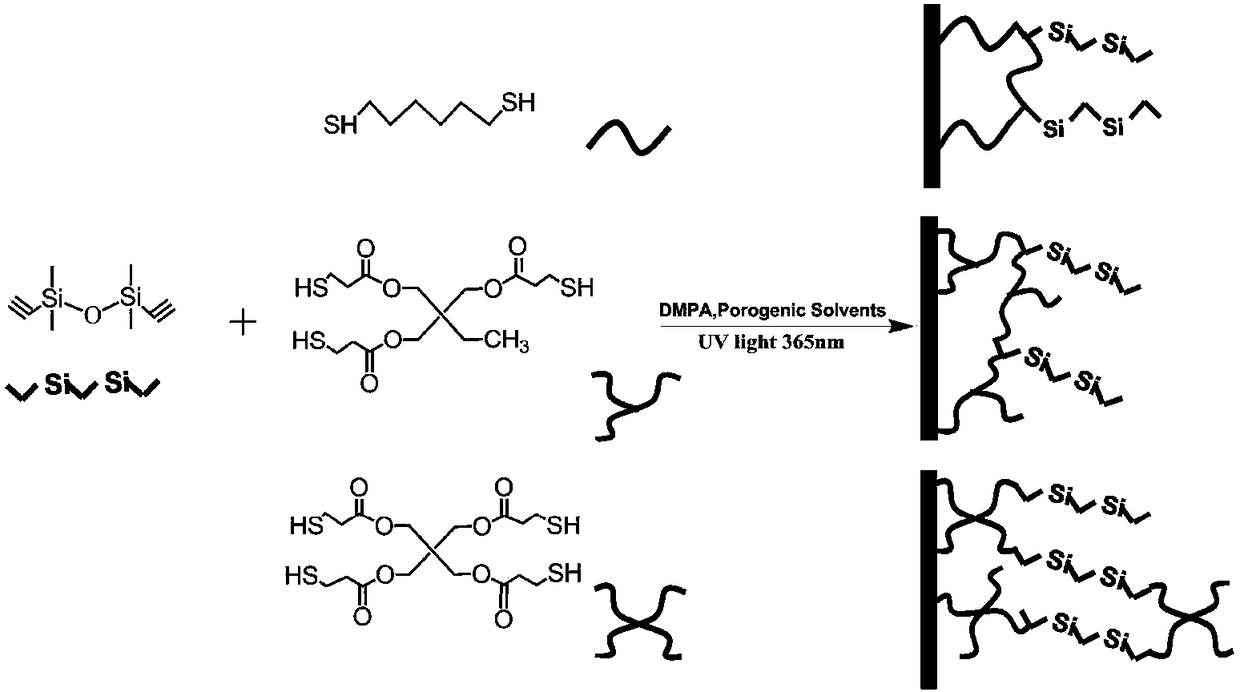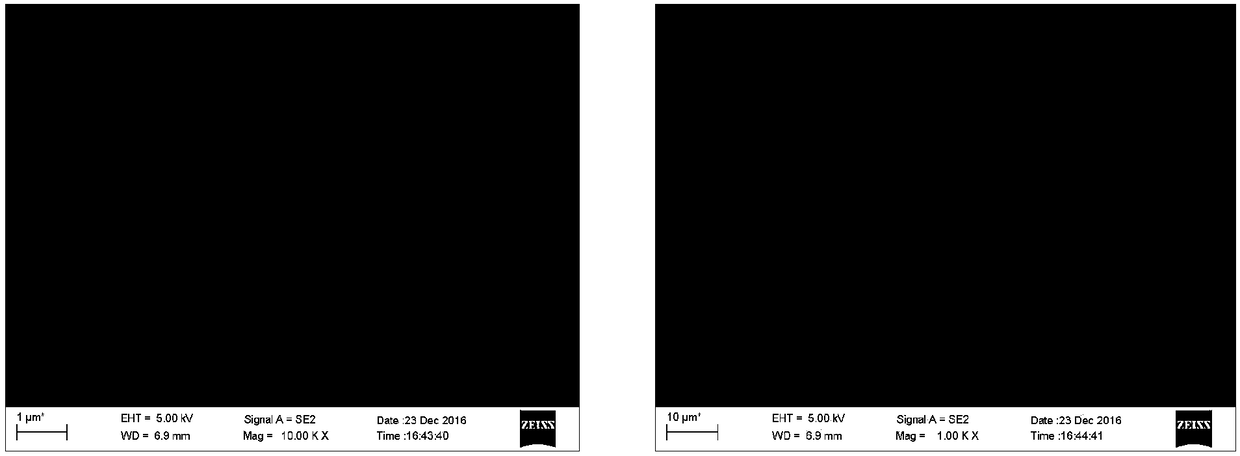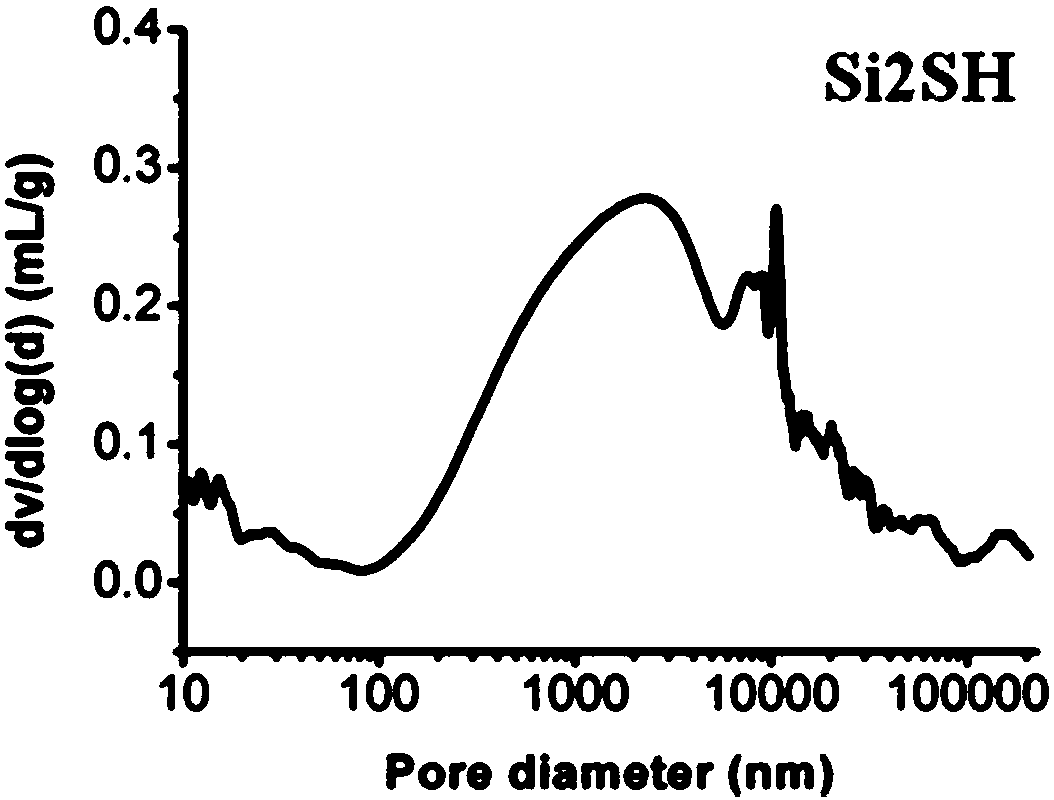Method for preparing porous integral material containing silicon and application of integral material
A technology of monolithic materials and reaction vessels, which is applied in the preparation of silicon-containing porous monolithic materials and the application field of monolithic materials, can solve problems such as the lack of potential for efficient separation and analysis.
- Summary
- Abstract
- Description
- Claims
- Application Information
AI Technical Summary
Problems solved by technology
Method used
Image
Examples
Embodiment 1
[0032] 1. Add 18.2 mg of DYDS reagent to the UV transparent glass bottle.
[0033] 2. Add 21.3 mg of 2SH to the above-mentioned UV transparent glass bottle.
[0034] 3. Add 90 μL of diethylene glycol diethyl ether and 60 μL of PEG200 into the above-mentioned ultraviolet transparent glass bottle.
[0035] 4. Add 0.5 mg of photoinitiator DMPA to the above-mentioned ultraviolet transparent glass bottle, and ultrasonically ultrasonicate the above-mentioned ultraviolet transparent glass bottle for 1 min to mix the components therein evenly.
[0036] 5. Use a syringe to introduce the mixed solution obtained in step 4 into a 75 μm (inner diameter) UV transparent capillary tube that has been pre-activated with vinyltrimethoxysilane, then seal both ends of the capillary tube with silica gel, and then put the remaining mixing liquid in a UV transparent glass bottle with airtight seal.
[0037] 6. Place the UV transparent capillary and UV transparent glass bottle in step 5 under a UV l...
Embodiment 2
[0040] 1. Add 18.2 mg of DYDS reagent to the UV transparent glass bottle.
[0041] 2. Add 26.8 mg of 3SH to the above-mentioned UV transparent glass bottle.
[0042] 3. Add 100 μL of diethylene glycol diethyl ether and 50 μL of PEG200 into the above-mentioned ultraviolet transparent glass bottle.
[0043] 4. Add 0.5 mg of photoinitiator DMPA to the above-mentioned ultraviolet transparent glass bottle, and ultrasonically ultrasonicate the above-mentioned ultraviolet transparent glass bottle for 1 min to mix the components therein evenly.
[0044] 5. Use a syringe to introduce the mixed solution obtained in step 4 into a 75 μm (inner diameter) UV transparent capillary tube that has been pre-activated with vinyltrimethoxysilane, then seal both ends of the capillary tube with silica gel, and then put the remaining mixing liquid in a UV transparent glass bottle with airtight seal.
[0045] 6. Place the UV transparent capillary and UV transparent glass bottle in step 5 under a UV ...
Embodiment 3
[0048] 1. Add 18.2 mg of DYDS reagent to the UV transparent glass bottle.
[0049] 2. Add 35.0 mg of 4SH to the above-mentioned UV transparent glass bottle.
[0050] 3. Add 100 μL of diethylene glycol diethyl ether and 100 μL of PEG200 into the above-mentioned ultraviolet transparent glass bottle.
[0051] 4. Add 0.5 mg of photoinitiator DMPA to the above-mentioned ultraviolet transparent glass bottle, and ultrasonically ultrasonicate the above-mentioned ultraviolet transparent glass bottle for 1 min to mix the components therein evenly.
[0052] 5. Use a syringe to introduce the mixed solution obtained in step 4 into a 75 μm (inner diameter) UV transparent capillary tube that has been pre-activated with vinyltrimethoxysilane, then seal both ends of the capillary tube with silica gel, and then put the remaining mixing liquid in a UV transparent glass bottle with airtight seal.
[0053] 6. Place the UV transparent capillary and UV transparent glass bottle in step 5 under a UV...
PUM
 Login to View More
Login to View More Abstract
Description
Claims
Application Information
 Login to View More
Login to View More - R&D
- Intellectual Property
- Life Sciences
- Materials
- Tech Scout
- Unparalleled Data Quality
- Higher Quality Content
- 60% Fewer Hallucinations
Browse by: Latest US Patents, China's latest patents, Technical Efficacy Thesaurus, Application Domain, Technology Topic, Popular Technical Reports.
© 2025 PatSnap. All rights reserved.Legal|Privacy policy|Modern Slavery Act Transparency Statement|Sitemap|About US| Contact US: help@patsnap.com



